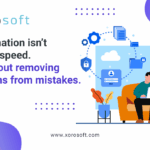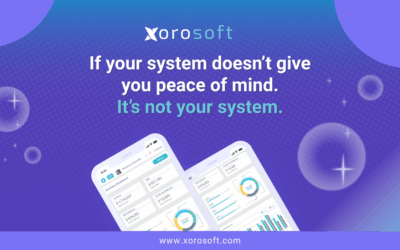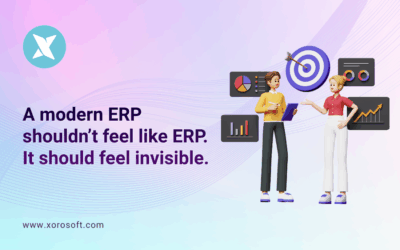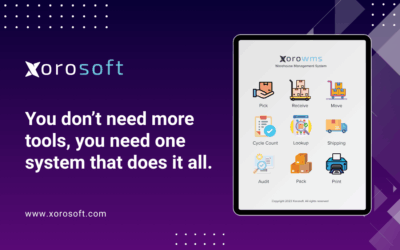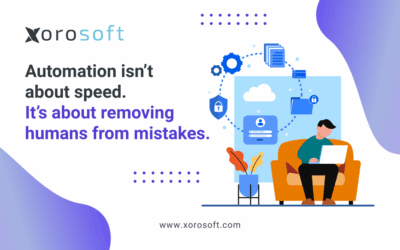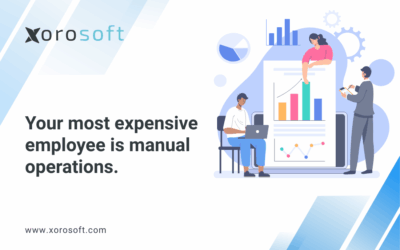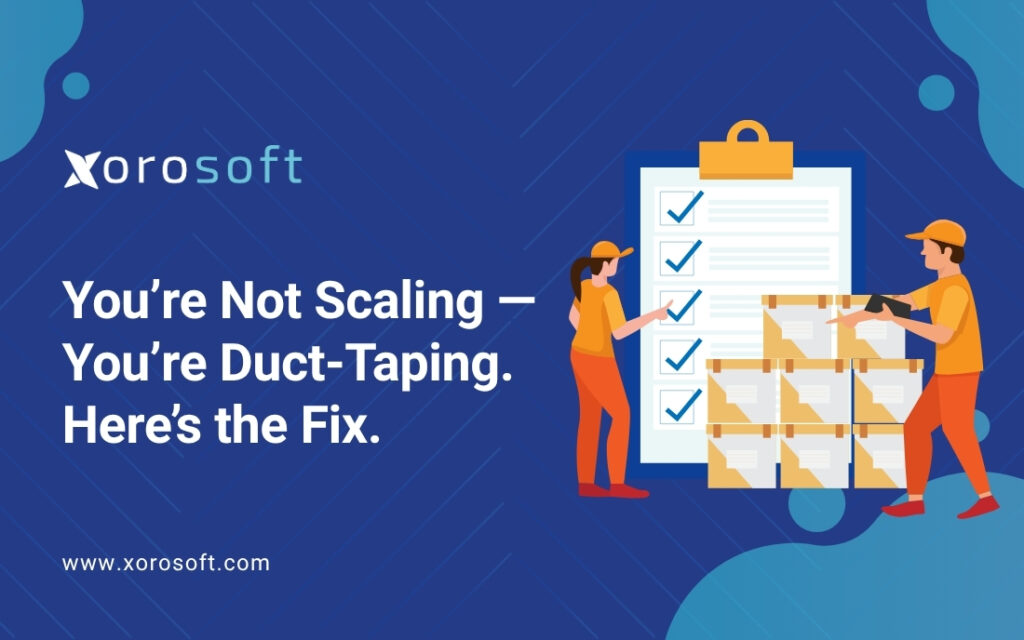
The Truth Hurts: Your ERP Isn’t Scaling
Most businesses believe they’re scaling. However, they’re just duct-taping systems together. Without the right ERP for scaling businesses, operations become fragile, disconnected, and inefficient—and it only gets worse as you grow.
You’ve got orders coming in, your team is moving fast, and from the outside, it might even look like you’re winning.
But internally? It’s duct tape and wishful thinking.
Teams juggle spreadsheets all day. Staff manually enter Shopify orders. Inventory counts often mismatch. And the accounting team struggles to trust their reports.
The Real Cost of Disconnected Systems
Let’s break it down. Here’s what’s actually going on behind the scenes:
-
Inventory errors that lead to stockouts, backorders, and angry customers
-
Fulfillment delays due to warehouse and order systems not communicating
-
Manual procurement workflows using email, Excel, and Slack
-
Disconnected financials with reporting gaps that delay decisions
-
No unified visibility across warehouses, teams, and sales channels
To make things worse, this chaos becomes normalized. As time passes, teams begin to normalize the chaos. Businesses accept the inefficiencies and continue to pile on more apps, tools, and workarounds.
Additionally, fragmented systems hurt cross-team visibility.
As a result, they’re stuck in survival mode. That’s not scaling—it’s stalling.
Why Fast-Growing Businesses Hit an Operational Wall
Here’s the core problem: most companies use apps that weren’t designed to work together.
In the beginning, you might use QuickBooks, Shopify, and a few spreadsheets. However, as you grow, things become more complex.
Over time, you add EDI tools, inventory trackers, shipping plugins, analytics dashboards, and manual templates.
Consequently, teams spend more time juggling systems than serving customers. Furthermore, the more apps you add, the more error-prone your workflow becomes.
Even though multiple tools seem affordable at first, they create hidden costs.
Even worse, there’s no single source of truth, no real-time visibility, and no cross-functional automation. So, errors multiply and accountability drops.
Eventually, growth becomes friction. And without a proper ERP for scaling businesses, things begin to unravel.
Stop Patching Systems—Start Scaling with Unified ERP
To truly scale, you need to replace your stack of disconnected tools with a centralized platform.
A cloud-based ERP for scaling businesses is built to handle the speed and complexity of modern operations. As a result, it helps you:
-
Integrate everything—sales, inventory, finance, fulfillment
-
Automate repetitive tasks so teams can focus on growth
-
Get real-time data visibility across locations, warehouses, and channels
-
Support multi-location, multi-channel, and multi-currency operations
-
Avoid costly delays and eliminate error-prone processes
Because all your operations run in one place, decision-making becomes more strategic. Moreover, the team communicates more effectively when they share the same data.
What’s more, the time saved by automation allows leaders to focus on scaling instead of troubleshooting.
Therefore, centralization isn’t optional—it’s necessary.
With this in mind, scaling doesn’t mean adding chaos—it means unlocking control.
Why Xorosoft ERP Is Built for Scaling
If your current stack feels like a mess of tools duct-taped together, you’re not alone.
This is exactly why Xorosoft ERP was created—to help fast-growing companies move from chaos to clarity.
Meanwhile, your competitors may already be streamlining operations.
Real-Time Visibility Across the Business
From procurement to fulfillment, your team sees the same real-time data. As a result, they make faster, smarter decisions.
Additionally, the ability to track key data points in real time means fewer delays and less guesswork.
In reality, spreadsheets are just a temporary crutch.
Seamless Integrations
Xorosoft connects directly with:
-
Amazon
-
3PL providers
-
EDI partners
Therefore, your data stays in sync without manual input or API hacks. In turn, you reduce the time spent fixing sync issues.
WMS That’s Built In
No more bolt-ons. Xorosoft includes a full-featured warehouse management system (WMS) that enables real-time picking, putaway, bin tracking, and inventory adjustments.
This built-in capability eliminates the need to rely on separate systems. As a result, warehouse teams can work more efficiently.
End-to-End Automation
From reorders to invoicing, workflows are automated. Consequently, your team gets time back and reduces human error.
Additionally, automation ensures consistency in processes that otherwise require constant manual attention.
To illustrate, imagine shipping orders without warehouse sync—errors would be inevitable. With this in mind, Xorosoft’s automation eliminates that burden.
Despite that, some teams still hold onto outdated workflows.
Cloud-Native Architecture
Xorosoft runs on a modern cloud-native architecture. You get faster implementation, fewer IT headaches, and easy scalability.
Unlike legacy systems, cloud-native platforms allow continuous updates and access anywhere. Hence, your tech infrastructure is always current.
Trusted by Users
Users love Xorosoft for its intuitive UI and powerful features. It’s ranked #1 in Ease of Use on G2.
Consequently, teams adopt it faster and get more done with less friction.
ERP for Scaling Businesses Starts with Xorosoft
Ultimately, growth shouldn’t feel like firefighting.
If your ERP can’t keep up—or worse, you’re duct-taping workflows together with spreadsheets—it’s time to rethink your approach.
Xorosoft ERP gives you centralized visibility, powerful automation, and a system that scales with you.
As a result, businesses move faster, stay leaner, and serve customers better.
To sum up, duct-taping tools limits your growth.
📈 Explore ERP features
💬 Book a demo
📚 Customer stories
💰 Pricing plans
🛍️ Shopify App Store



